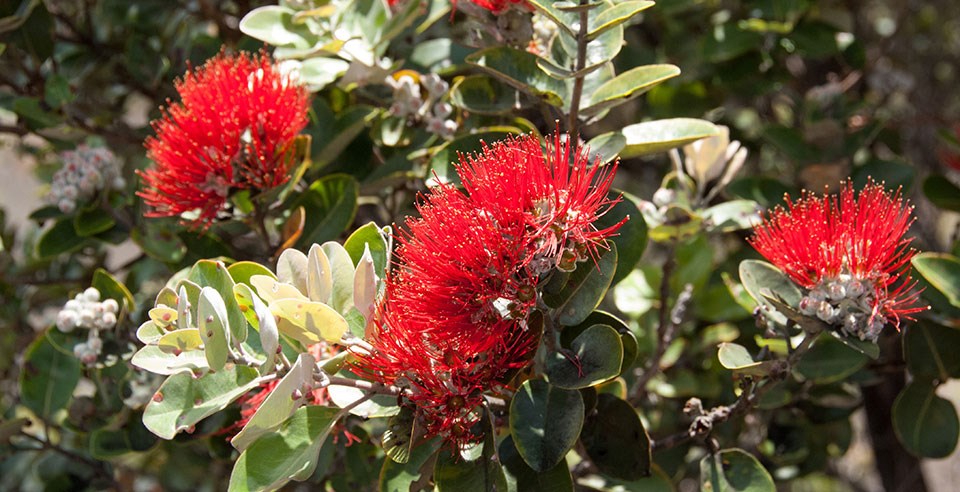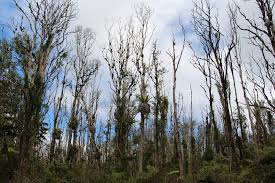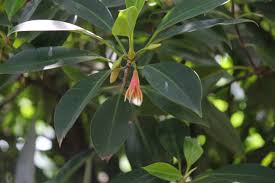APHIS proposes to place numerous plant taxa on its list of plants for planting whose importation is “not authorized pending pest risk analysis” (NAPPRA). Unfortunately, the proposal comes too late for some pests; doesn’t apply to at least one significant pathway of entry; excludes some highly damaging newly detected pathogens; and too often applies only to agricultural pests. Nevertheless, the proposal is worth supporting – while mentioning those caveats.
APHIS is accepting comments on the data sheets justifying the proposed listings until 24 January. The Data sheets can be obtained here. We encourage you to comment.
APHIS’ Regulatory Framework
Under APHIS’ regulations in ‘‘Subpart— P4P’’ (7 CFR 319.37 through 319.37–14 …), APHIS prohibits or restricts the importation of “plants for planting” – living plants, plant parts, seeds, and plant cuttings – to prevent the introduction of “quarantine pests” into the US. A “quarantine pest” is defined in § 319.37–1 as a plant pest or noxious weed that is of potential economic importance to the United States and not yet present in the country, or is present but not widely distributed and is being officially controlled.
§ 319.37–2a authorizes APHIS to identify those plant taxa whose importation is not authorized pending pest risk analysis (NAPPRA) in order to prevent their introduction into the United States. If the plant taxon has been determined to be a probable invasive species, its importation is restricted from all countries and regions. If the taxon has been determined to be a host of a plant pest, the list includes (1) names of affected taxa, (2) the foreign places from which these taxa’s importation is not authorized, and (3) the quarantine pests of concern.
APHIS finalized a rule giving itself the authority to place plant taxa in the NAPPRA program in 2011; it has previously used this process twice to restrict imports of plant taxa – most recently in 2017.
Plant Taxa that Host a Damaging Pest or Pathogen
The proposed restrictions would apply to two plant families — Myrtaceae taxa (when destined to Hawai`i), and the subfamily Bambusoideae (bamboo); plus 43 other taxa that are likely to transport damaging insects, pathogens, or viruses.

ohia in bloom; National Park Service photo1) All plants in the family Myrtaceae that are destined for Hawai`i.
The proposed restriction is intended to counter the risk that additional strains of the `ohi`a rust pathogen Austropuccinia psidii might be introduced and prove more damaging to native Hawaiian vegetation than the strain already present on the islands. (See description of `ohi`a rust here.
`Ohi`a rust was detected in Hawai`i in 2005. Detection was followed by scientific studies to determine whether different strains exist and, if so, whether they posed a threat to Hawaiian vegetation. Under the circumstances, the proposed action is disturbingly tardy.
Worse, the pathogen was probably introduced to Hawai`i on imports of flower and foliage cuttings, rather than entire plants or propagules. Unfortunately, the section of APHIS’ regulations that governs imports of plants that can be grown (“plants for planting”) does not apply to imports of cuttings (including flowers). In the Federal Register notice, APHIS says it will issue a separate proposal to tighten regulations on imports of cuttings and flowers. I hope they move expeditiously on this rulemaking – which will be more cumbersome in even the best case because it requires a full rulemaking, not the expedited notice and comment process allowed under the NAPPRA program.
It is disturbing that the proposal does not include the two Ceratocystis species that are killing millions of `ohi`a trees in Hawai`i link to DMF writeup. It is true that these were identified relatively recently – in 2017. However, other plant taxa proposed for inclusion in the NAPPRA category were also detected or determined to be the cause of a disease as recently as 2017.

ohia trees killed by Ceratocystis; Island of Hawaii; photo by J.B. Friday, University of Hawaii2) APHIS proposes to include another pest that might attack a native Hawaiian plant, Phyllanthus distichus. Another species in the genus, P. saffordii is endemic to Guam; it is listed as endangered under the federal Endangered Species Act. Other Asian gooseberries in the Phyllanthus genus are grown in backyards in Hawai`i and other semitropical areas and there is some interest in expanding commercial uses.
3) APHIS proposes to include several plant taxa important in tropical agriculture because of the threat that imports of those plants will transport diseases or pests. These include two pathogens that threaten production of macadamia nuts (Neopestalotiopsis macadamiae and Pestalotiopsis macadamiae); and pests of breadfruit, lychee, and durian.
4) Some of the plant taxa that APHIS hopes to protect from new pests or pathogens by placing hosts in the NAPPRA category are invasive. These include – in Hawai`i – Syzygium jambos (rose apple). It is named as a host of two pests targetted by the proposed action – the `ohi`a rust pathogen Austropuccinia psidii and armored scale insect Myrtaspis syzygii.
Euonymus bungeanus (winterberry euonymus) is in the same genus as several plant species invasive across the continent. APHIS proposes to restrict its importation in order to prevent introduction of the Euonymus yellow mottle associated virus (EuYMaV), which has only that plant species as a known host.
5) APHIS also proposes to add to the NAPPRA category several plant taxa that could transport the Elm mottle virus (EMoV) because of the threat the virus poses to several European elm species – and presumably also to North American elms. The virus also attacks hydrangea and lilac.
In several cases, some of the primary hosts of the target pest or pathogen are already in NAPPRA for other reasons from some origins. Nearly all the woody hosts are already required to undergo post-entry quarantine – which presumably APHIS now considers to provide inadequate protection.
6) Also proposed are diseases or pests that threaten grapevines and tomatoes.
Several of the proposed taxa are already present in the US (including `ohi`a rust). Other proposed listings appear to be precautionary actions to protect plant taxa that USDA expects to be increasingly important economically in the future.
Plant Taxa Proposed Because They Appear Likely to be Invasive
APHIS has proposed 26 plant taxa for inclusion in the NAPPRA category because they might themselves be invasive. Of greatest ecological concern are two taxa of mangroves which had been introduced by early 20th century plant explorer David Fairchild and have since been detected to be spreading in South Florida. These are Bruguiera gymnorhiza and Lumnitzera racemose. Also of concern is a vine that grows in Asian and Indian Ocean mangrove forests, Derris trifoliate.

Wikimedia Commons
Several proposed species are aquatic plants that can form dense mats.
Other taxa proposed appear to possibly threaten pastures or other agricultural uses.
Posted by Faith Campbell
We welcome comments that supplement or correct factual information, suggest new approaches, or promote thoughtful consideration. We post comments that disagree with us — but not those we judge to be not civil or inflammatory.